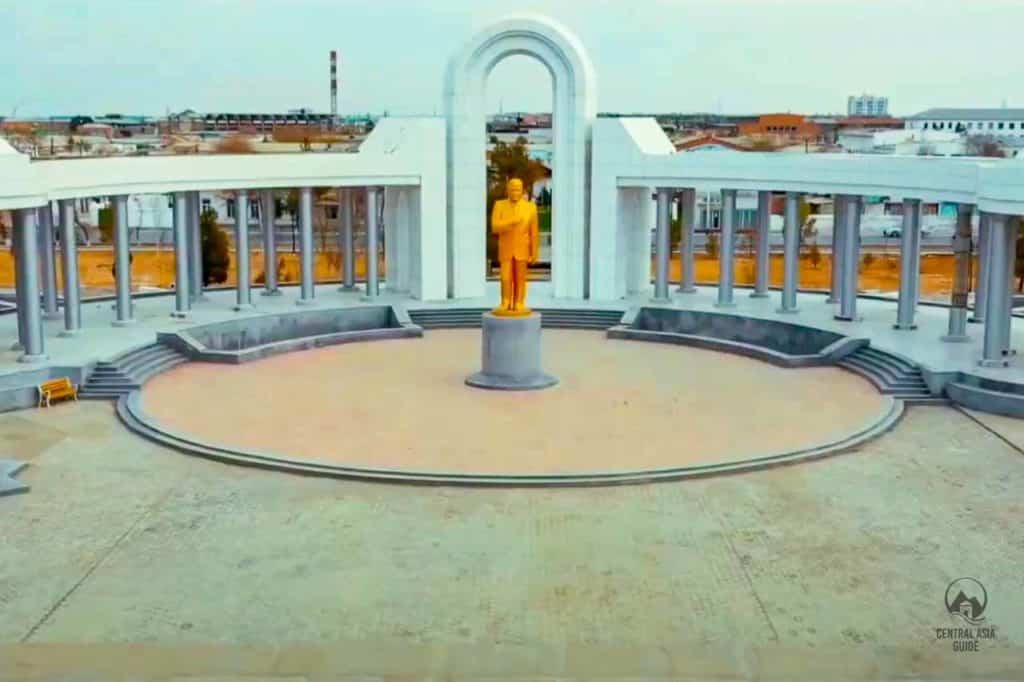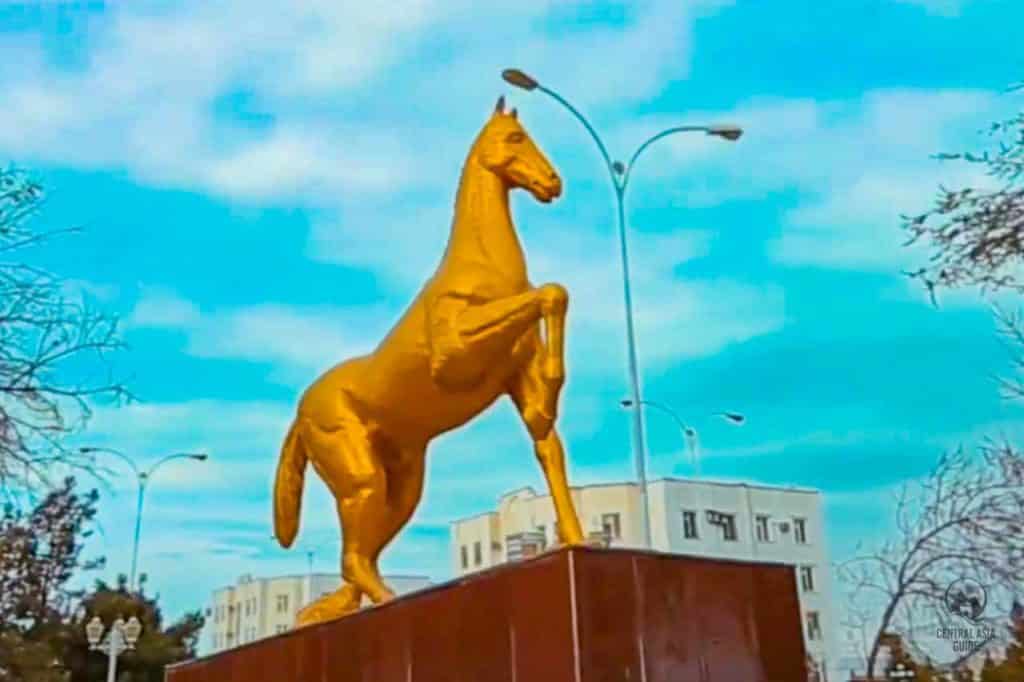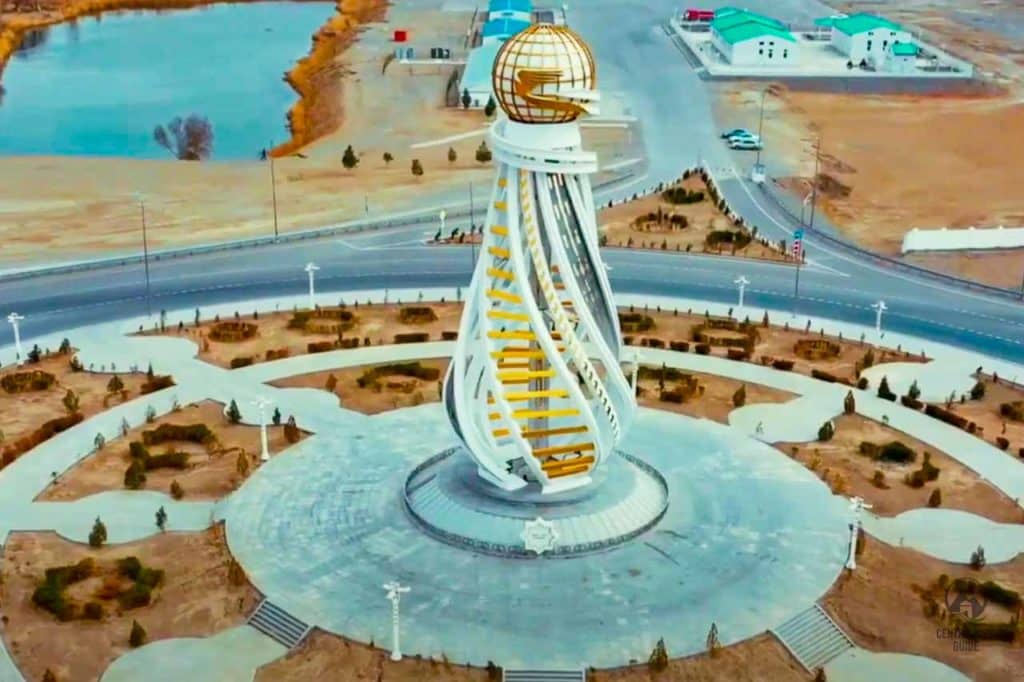Turkmenabat
Turkmenabat
Turkmenabat (or Turkmenabad) lies on the banks of the great Amu-Darya, north from the Karakum desert and surrounded by the irrigated, fertile fields of Turkmenistan. Turkmenabat is the heart of the eastern part of Turkmenistan and the second largest city after Ashgabat with a population of 200,000 people. Turkmenabat is somewhat influenced by Uzbekistan which is natural as it is just next to the border.
History
Turkmenabat carries a long history, based around its geographical position as a suitable crossing point of the large Amu Darya river. Initially, the city was named Amul and it was first settled more than 2,000 years ago gradually growing to a prosperous crossroads for Silk Road routes heading east to China, south to India and north to Khorezm. Amul was razed by the Mongols in 1221, but the city re-emerged, now called Charjou (‘Four Channels’), a name you’ll still hear used by the remaining Russian-speaking locals. Later Turkmenabat fell under the control of the Khanate of Khiva and then the Emirate of Bukhara in the 18th and 19th centuries. The construction of a railway bridge over the Amu Darya in 1886 marked a new stage in the development of the town. In July 1999, Charjou was renamed Turkmenabat, the city of Turkmens, to show the “great ideas of unity and stability of the country”. In 2009 a new gas pipeline was opened here taking Turkmen gas to China, thus ensuring the city’s economic success.


Turkmenabat Sights
The city has much to offer for the enthusiastic traveler who seeks unique attractions, even though for most of the tourists it’s just a stopover on the long journeys to Kugitang Nature Reserve, Mary, Dashogus or Uzbekistan destinations.
There is a small park situated next to a the Lebap regional museum with a collection of statues featuring the busts of seven prominent Turkmen classical poets, grouped around Magtymguly. The park also retains ten broken fizzy-water vendors, a legacy of the Soviet era. Another Soviet relic is the old cinema behind the western edge of the park. Built-in 1948, it is now mostly used for displays of Turkmen dancing. The colorful foyer still retains faded photographs of film stars dressed in 1970s style.
The Lebap Regional Museum
The Lebap Regional Museum standing in Shaidakov street is a must-visit sight already for its building. A unique Shia mosque built in the early 20th century by an Iranian merchant named Hajy Malik and was turned into a museum by the Soviets in the 1960s. It’s a brick structure that stands in a small park just to the north of the Lebap Restaurant, with a rectangular tower and two brick minarets and it may become a mosque again once the museum moves to new bases that were being built opposite the train station at the time of writing. Its sides are open by arches separated with fluted columns. The mosque was worldly during the Soviet period and became a museum in 1967. Many older locals still regard it as a holy building and tell a prayer when they pass by.
Inside the museum the most noteworthy section is the ethnography section, including a fully furnished yurt and a diorama of a silversmith workshop and the requisite room full of quietly disintegrating taxidermy. The ethnographic exhibitions include apart from a walk-through yurt, a life-sized model of a traditional Turkmen courtyard, complete with stuffed sheep, and collections of silver jewelry, musical instruments, and even 19th-century agricultural implements. The archaeological section is most valuable in displaying models and photographs of some of the main sites of the region, such as the Astana-Baba and Darganata mausolea together with the madrasa of Idris Baba. The natural history exhibits are intended to give a taste of the natural wealth of the three nature reserves lying within the Lebap Region, but attempt to do this largely showing stuffed animals. The 2nd floor is surreal, with displays including randomly collected coins from foreign currencies (most long since replaced by the euro), two enormous cakes, a collection of children’s clothing, few Berdymukhamedov hagiographies and a collection of wares produced by the Charjev Leased Chemical Enterprise. There are cases devoted to the main industries of the town, including the production of silk, cotton and licorice. Other displays include samovars, modern banknotes from across the region and tsarist coins.


Russian Orthodox Church
If you walk a couple of blocks southeast from the park, there will be a small amusement park and just next to it stands a Russian Orthodox Church. The church was built to honor St. Nicolas in the late 19th century. The structure is painted with canary yellow and decorated inside with a rich collection of icons. The entrance is beneath a white arch on the west side of the building. Another arched entrance on the side facing the road is kept locked. In the streets around the church, there are some attractive single-storey brick buildings of the late 19th and early 20th centuries.
Getting around of Turkmenabat
Turkmenabad airport has three flights a day between Turkmenabat and Ashgabat taking about 1h. The airport is located 2 km east from the city center. The brand new train station lies in the center of town and has two daily trains to Ashgabat, taking 12 hours through Mary. Outside the station, you can also find marshrutkas or shared taxis to Mary, Ashgabat and to Dashogus. You can also get a ride to the Uzbek border but be prepared to bargain or you might end up paying a fairly high price.
Other sights next to Astana baba Mausoleum
Page updated 27.2.2023